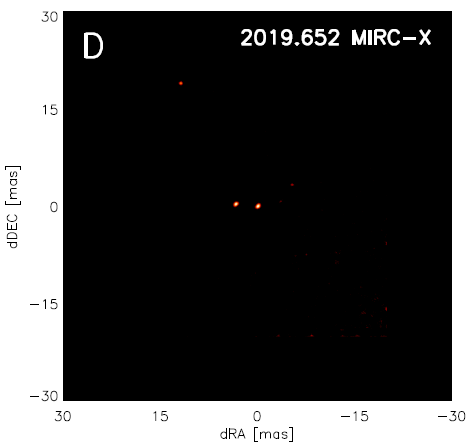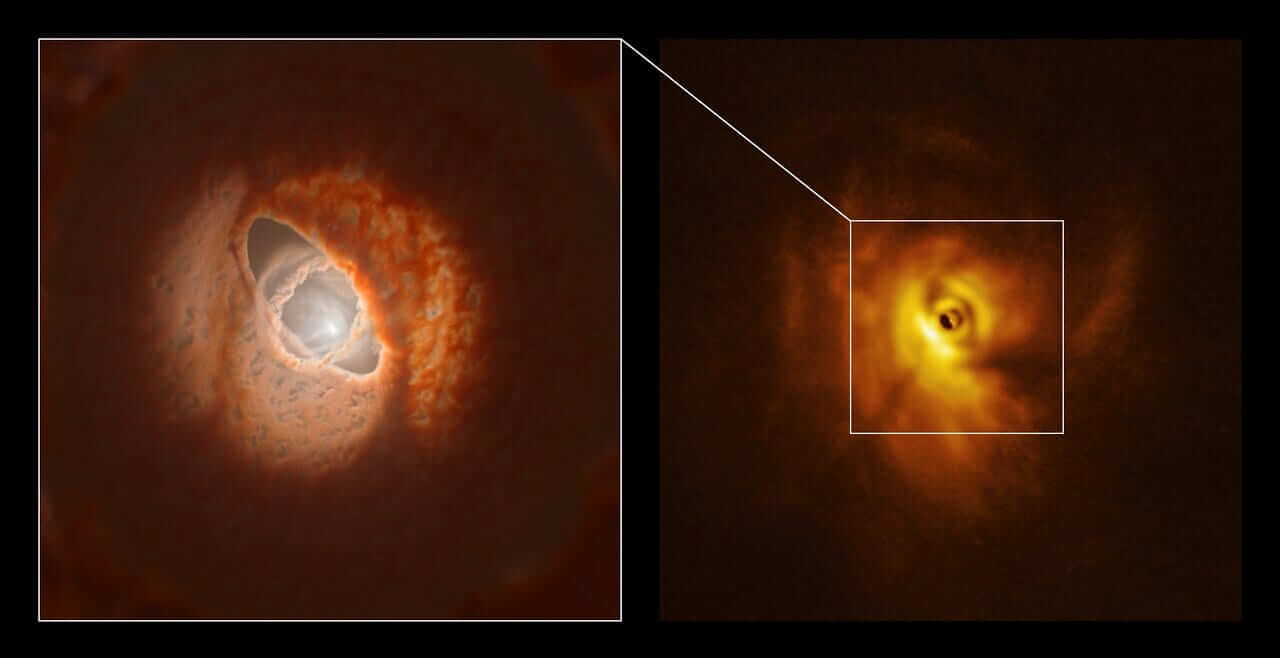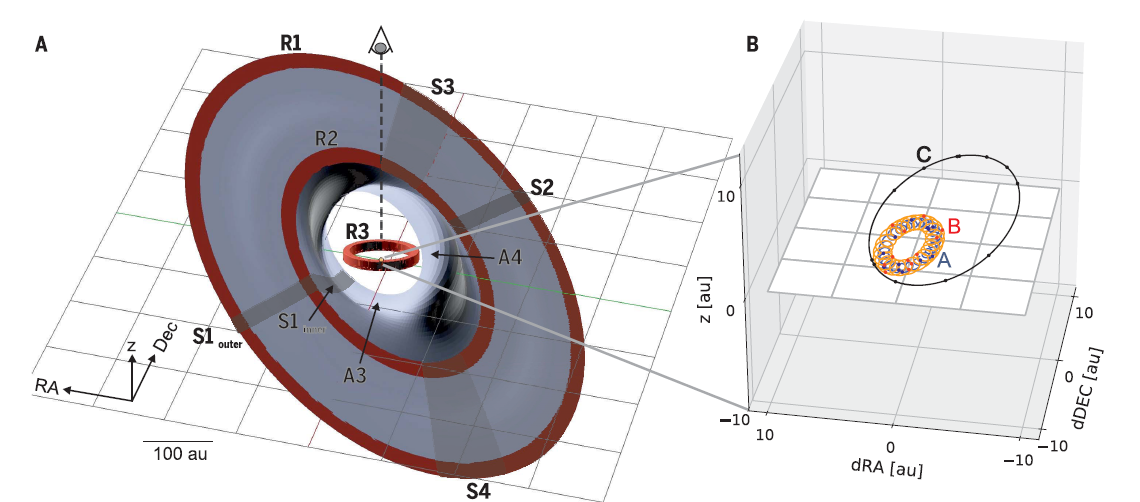Young stars are surrounded by a circumstellar disk of gas and dust, within which planet formation can occur. Gravitational forces in multiple star systems can disrupt the disk. Theoretical models predict that if the disk is misaligned with the orbital plane of the stars, the disk should warp and break into precessing rings, a phenomenon known as disk tearing. Recent observations of the young triple star system, GW Orionis, reveal the first direct evidence that groups of stars can tear apart their planet-forming disk, leaving it warped and with tilted rings.

The CHARA image above shows the three stars in the GW Orionis. Data from the CHARA Array and the Very Large Telescope Interferometer (VLTI) were used to map the orbits of the three stars.
The structure and orientation of the disk around GW Orionis was imaged by the SPHERE instrument on ESO’s VLT and with radio array ALMA. The images show an eccentric ring that is misaligned with the orbital planes and the outer disk. The ring casts shadows on a strongly warped intermediate region of the disk. If planets can form within the warped disk, disk tearing could provide a mechanism for forming wide-separation planets on oblique orbits.

The inner ring of GW Orionis: model and SPHERE observations. SPHERE image (right) with an ESO artist impression (left). Credit: ESO/L. Calçada, Exeter/Kraus et al.

Scattered light model used to determine the eccentricity and three-dimensional orientation of ring R3 and the geometry of the disk warp. (A) Diagram of the three-dimensional orientation of the disk components in the model. (B) Orientation of the orbits in the hierarchical triple-star system, with the stellar positions at the time of our imaging measurements indicated. The coordinate system is centered on the center of mass of the system. The white grid indicates the observed plane of the sky (right ascension RA and declination Dec), and the z axis points toward the observer, represented by the eye symbol in (A).
Reference:
A triple-star system with a misaligned and warped circumstellar disk shaped by disk tearing
Kraus, S., et al., 2020, Science, 369, 1233



